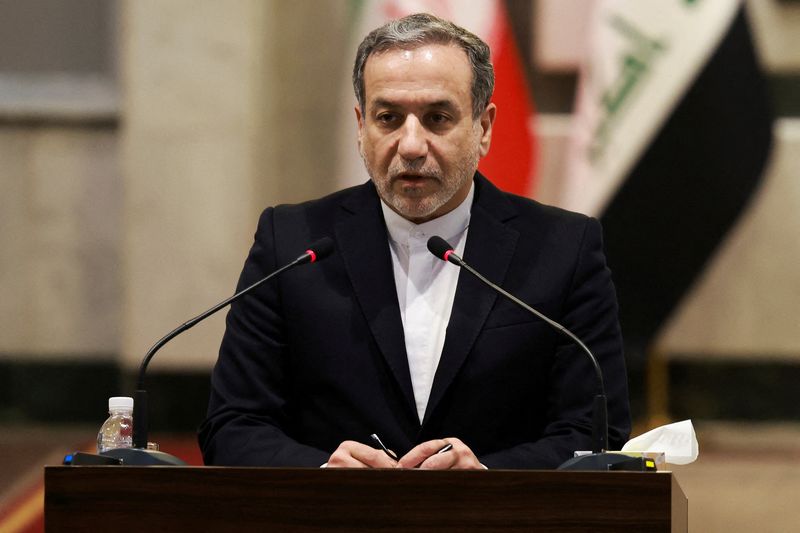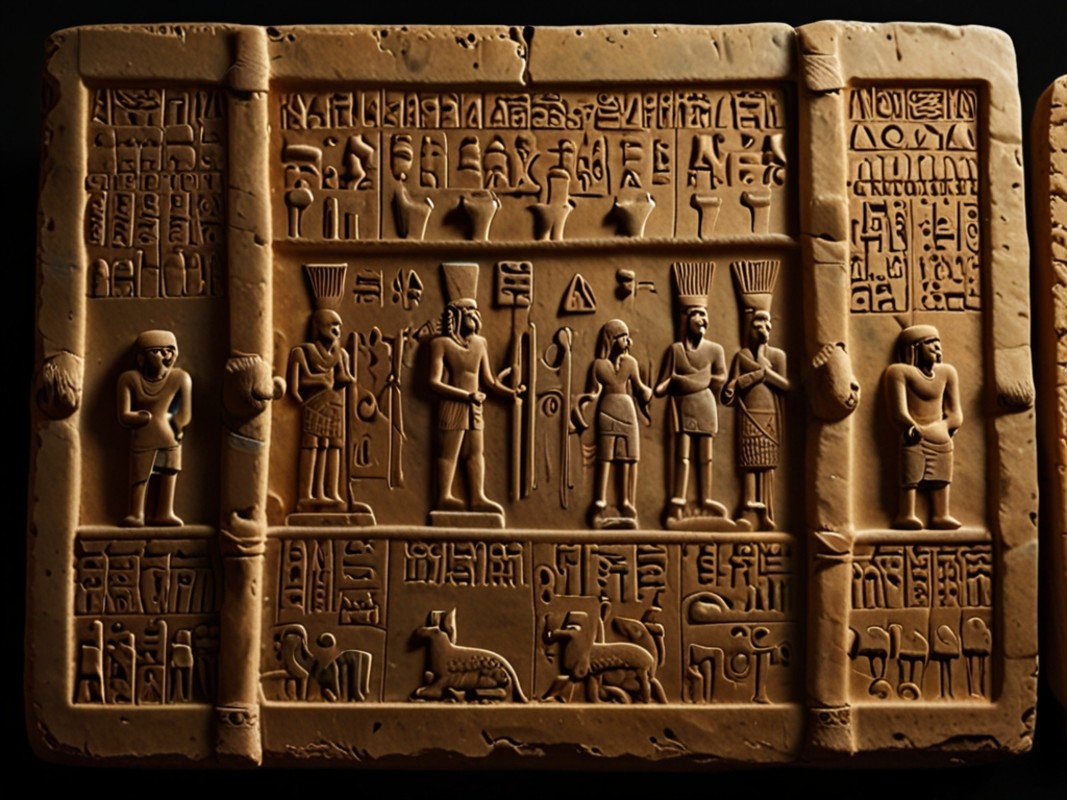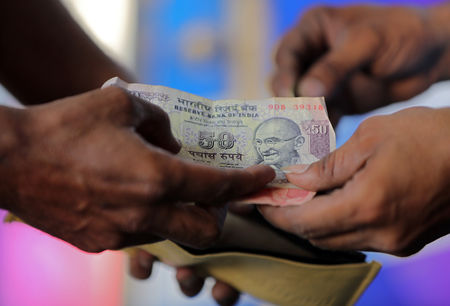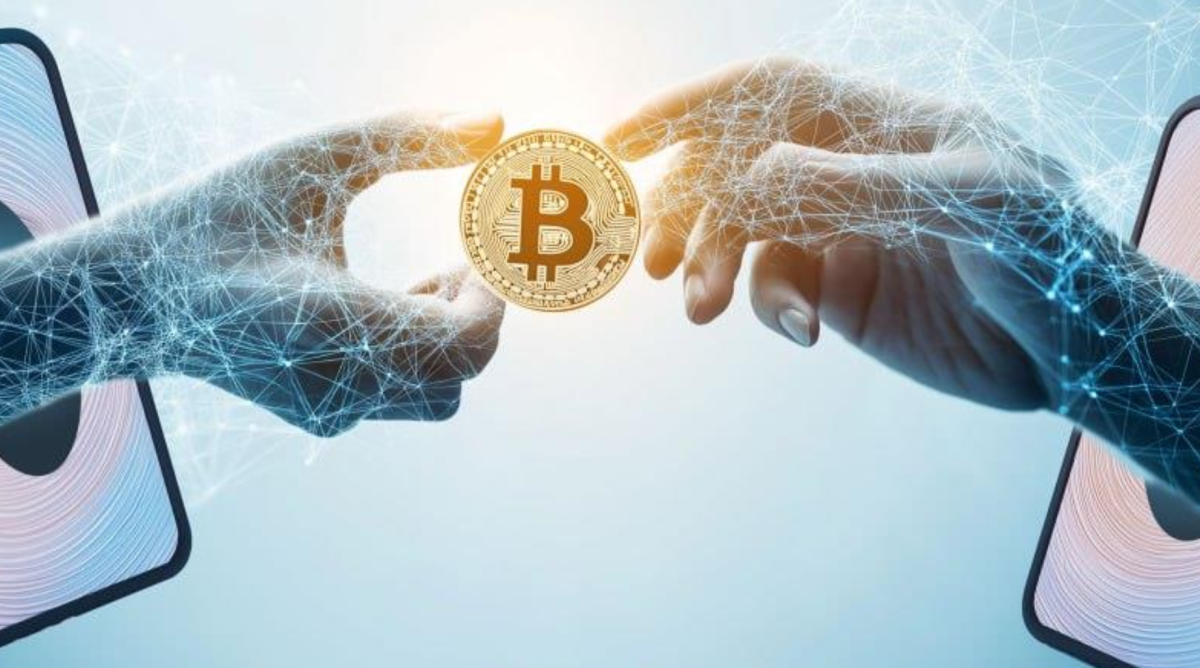Month: December 2024
Dollar edges lower as yields slips; hefty annual gain likely
Post Content
Turkish lira sinks following Erdogan’s interest rate remarks
Post Content
Iran says 2025 ‘important year’ for nuclear issue
Post Content
Debt: Bitcoin Is Not A Return To Stateless Money, It Is the First
I have just finished reading Debt: The First 5000 Years by anthropologist David Graeber. The book takes a look at the history of money, debt, and how they relate to societal structures from a lens that departs heavily from the conventional wisdom of economic thinking.
Conventional wisdom paints a picture of people inefficiently bartering goods and services directly for each other, and money naturally arising as a result of the problems inherent in this. Graeber eviscerates this narrative looking at anthropological history. Primitive communities simply shared their resources freely with each other, living in a communal lifestyle, with bartering rarely taking place, and only in the context of separate communities interacting with each other. It played no role in early societies’ intra-communal affairs.
Money, as in commodity money, only began to be used in rare inter-communal interactions across great distances. The economy in local regions did not begin using such mechanisms for exchange. They used credit. Credit operated and overseen by the government, such as in Ancient Sumer. This system grew out of the informal “credits” people considered when sharing resources in more primitive societies. But it was formalized and maintained by the power structure of the government and temples of Sumer. No money would change hands during exchanges, people would simply record debts stored at the temple, and periodically settle their obligations with actual consumable commodities.
Debt came before coinage, and it was created and maintained at scale by the state. Commodity money only came later, again minted and circulated by the state, as large scale trust based civilizations collapsed and gave way to warring imperial states. Debt and credit do not make much sense in a time period of constant war and roving armies, with no certainty at all they will ever return to settle debts after moving on.
Ever since, with the anomaly of the modern era and central banks, human societies have oscillated between virtual credit money and coinage depending on whether or not the era of the time was predominantly predicated on large scale war and conquest. The same patterns repeated through the ages as well, with people creating their own informal and localized credit networks after large Empires using coinage fell, the government slowly inserting themselves into these to mediate, and inevitably the return of coinage as violent Empires rose.
Bartar, as conventionally taught, was never actually a part of this process of the development of money, and the state invariably had a direct involvement in the formation of monetary systems and markets.
I’m sure many people are incredibly triggered reading that, but Graeber’s case is very solid and built upon actual historical and anthropological evidence, rather than speculation. Especially the idea that Chartalism has a much sounder basis than many in this space would like to admit.
This actually makes Bitcoin all the more profound to me. Bitcoin isn’t simply going back to a stateless money, I don’t think that one ever truly existed after reading Debt. Bitcoin is the first stateless money to ever exist. To me, that makes it an even more immense accomplishment and historical shift.
Regardless of your economic leanings, I recommend giving this book a read. It will give you quite a lot to think about in the context of Bitcoin.
This article is a Take. Opinions expressed are entirely the author’s and do not necessarily reflect those of BTC Inc or Bitcoin Magazine.
Michael Saylor Doesn’t Understand Bitcoin
Follow Frank on X.
On a recent episode of the Galaxy Brains podcast, Michael Saylor made the case that bitcoin isn’t a currency and that it’s best to think of it as capital and capital only.
He also shared that Tether (USDT) and Circle’s USD Coin (USDC) are the real digital currencies and unveiled his “evil genius strategy” (his own words) to get the world to adopt the U.S. dollar stablecoins as opposed to bitcoin.
In this Take, I’ll cite some of Saylor’s own words from the podcast before breaking down why many of the points he made are off base.
Capital, Not Currency
“It’s not a currency, it’s capital,” said Saylor about halfway through the episode.
“You just have to come to grips with it — it is not digital currency. It is not cryptocurrency. It is digital capital. It is crypto capital,” he added.
I searched the Bitcoin Whitepaper to see how many times the word “capital” showed up.
It isn’t mentioned once.
However, in both the title and abstract of the text, bitcoin is referred to as “electronic cash.” While cash can of course also be capital, it’s not only capital. To think of bitcoin only as capital is to deny certain of its most essential properties — like the ability to use it to transact with anyone anywhere in the world permissionlessly.
To deny bitcoin as a currency is to deny a large part of its value proposition. Bitcoin’s roles as a Store of Value (SoV) and a Medium of Exchange (MoE) are inextricably linked. For more on this, I’d advise you (and Michael Saylor) to read Breez CEO Roy Sheinfeld’s piece “Bitcoin’s False Dichotomy between SoV and MoE”.
As the episode proceeded Saylor continued to (poorly) make the case for why bitcoin is capital and not currency.
“There are a lot of maxis who are like ‘No, we want it to be a currency. We want to be able to pay for coffee with our bitcoin. Pay me in bitcoin,’” he said. “It’s like ‘Pay me in gold. Pay me in a building. Pay me with a slice of your professional sports team. Pay me with a Picasso.’”
It’s actually not like that at all.
Sure, bitcoin is scarce, somewhat like gold, Manhattan real estate, sports teams or famous paintings, but it has a number of other properties that make it far different from any of these other assets.
To illustrate a dimension of that point, I’ll cite my colleague Alex Bergeron:
I invite anyone who thinks Bitcoin is like gold to launch a custodial gold wallet.
I’ll wait.
— Alex B (@bergealex4) December 22, 2024
And then Saylor cited — wait for it — Fed Chair Jerome Powell’s take on bitcoin in efforts to drive home his point that bitcoin is capital, not currency.
“The reason bitcoin rallied past $100,000 is because Jerome Powell on stage said to the world, bitcoin does not compete with the dollar, it competes with gold,” he said.
Oddly enough, Saylor said this without acknowledging that the man who said this is the head of the institution that Bitcoin should theoretically replace.
USDT, Not BTC
In the interview, Saylor also drove home the point that the real digital currencies are U.S. dollar stablecoins.
“The cryptocurrency, the digital currency, is Tether (USDT) and Circle (USDC),” he said. “It’s a stablecoin U.S. dollar — that’s the digital currency.”
This is when I started to get nauseous.
For those who don’t yet know this, Bitcoin came into the world in the wake of the Great Financial Crisis of 2008, when the U.S. government in conjunction with the U.S. Federal Reserve opted to print U.S. dollars en masse (debase the currency) to bail out failing banks, the burden of which was laid both on the U.S. taxpayers and U.S. dollar holders worldwide.
Bitcoin is a decentralized money that was created as an alternative to the U.S. dollar and all other fiat currencies. Trying to convince people that bitcoin is not this is disingenuous at best, deeply manipulative at worst.
But this isn’t even the worst of what Saylor had to say on the episode.
He went on to propose that the banks that got bailed out in the 2008 financial crisis issue their own stablecoins, which would help prop up the U.S. debt market.
“They ought to just create a normal regime to issue digital currency backed by U.S. treasuries,” said Saylor.
“The U.S. ought to have a framework so Tether relocates to New York City. That’s what you want, right? And then you ought to basically have a free-for-all where JP Morgan or Goldman Sachs can issue their own stablecoin,” he added.
No, Michael Saylor, that’s not what I want. In fact, it’s very far from what I want.
I don’t want Tether anywhere near New York City (my hometown) and I don’t want JP Morgan and Goldman Sachs issuing U.S. dollar stablecoins that they control, essentially the equivalent of CBDCs.
When I think about Goldman Sachs, the first thing that comes to mind is award-winning writer Matt Taibbi’s description of the institution from his New York Times bestseller Griftopia.
“The first thing you need to know about Goldman Sachs is that it’s everywhere,” began Taibbi in the book. “The world’s most powerful investment bank is a great vampire squid wrapped around the face of humanity, relentlessly jamming its blood funnel into anything that smells like money.”
Goldman Sachs, much like the U.S. Federal Reserve, is an institution that sucks the life force from humanity. Bitcoin was designed to take power away from such institutions, not strengthen them.
Toward the end of the episode, Saylor laid out his master plan for bitcoin and U.S. dollar stablecoins.
Here it is:
“Everybody outside the U.S. would give their left arm to be capitalized on U.S. bonds. So, my strategy would be — and I really think it’s an evil genius strategy; it’s so good that our enemies would hate us, but our allies would complain, too. And the U.S. would make $100 trillion in a heartbeat.
Here’s the strategy: You dump gold, demonetize the entire gold network. You buy bitcoin — 5 million or 6 million bitcoin — and you monetize the bitcoin network. All the capital in the world, sitting in Siberian real estate or Chinese natural gas or every other currency derivative that’s held as a long-term store of value — Europeans, Africans, South Americans, Asians, they all just dump their crappy property and their crappy capital assets and they buy bitcoin. The price of bitcoin goes to the moon.
The U.S. is the big beneficiary. U.S. companies are the big beneficiary. And while you’re doing that, you normalize and support digital currency, and you just define digital currency as the U.S. dollar backed by U.S. dollar equivalents in a regulated U.S. custodian that’s audited. What happens next?
$150 billion of stablecoins goes to $1 trillion, $2 trillion, $4 trillion, $8 trillion, probably somewhere between $8 and $16 trillion, and you create $10 to $20 trillion of demand for U.S. sovereign debt.
While you’re taking away a little bit of the demand because the capital asset of bitcoin grows, you’re adding back the demand to back the stablecoin. [The digital U.S. dollar then] replaces the CNY, the Rubble. It replaces every African currency. It replaces every South American currency. It replaces the euro.
If you really believe in U.S. world reserve currency and U.S. values, every single currency in the world will actually just merge into the U.S. dollar if it was freely available.”
At this point, I stopped listening to the episode and projectile vomited all over the New York City subway car in which I was sitting.
I didn’t come into the Bitcoin space to help the U.S. run a scheme in which it acquires a large percentage of the bitcoin while hooking the world on its trash currency, and it deeply saddens me that someone that many in the Bitcoin space look up to would come up with such a conniving plan.
Bitcoin Is Money
Bitcoin is money. It’s a type of money that cannot be censored or debased that has spectacularly grown in value over the past decade, making it one of, if not the most, powerful tool ever created for individuals.
To think of it as anything less, or to try to convince people that a new iteration of an incumbent version of money is better than it, is to be deeply misinformed.
While bitcoin is capital, that’s not all it is, and please don’t let Michael Saylor or anyone else convince you otherwise.
This article is a Take. Opinions expressed are entirely the author’s and do not necessarily reflect those of BTC Inc or Bitcoin Magazine.
How To Buy Bitcoin During Bull Market Dips
Buying Bitcoin at significantly higher prices than just a few months ago can be daunting. However, with the right strategies, you can buy Bitcoin during dips with a favorable risk-to-reward ratio while riding the bull market.
Confirming Bull Market Conditions
Before accumulating, ensure you’re still in a bull market. The MVRV Z-score helps identify overheated or undervalued conditions by analyzing the deviation between market value and realized value.
Figure 1: MVRV-Z Score indicates dips are still for buying.
Avoid Buying when the Z-score reaches high values, such as above 6.00, which would indicate the market is overextended and nearing a potential bearish reversal. If the Z-score is below this, dips likely represent opportunities, especially if other indicators align. Don’t accumulate aggressively during a bear market. Focus instead on finding the macro bottom.
Short-Term Holders
This chart reflects the average cost basis of new market participants, offering a glimpse into the Short-Term Holder activity. Historically, during bull cycles, whenever the price rebounds off the Short-Term Holder Realized Price line (or slightly dips below), it has presented excellent opportunities for accumulation.
Figure 2: Short-Term Holder break-even has historically marked bull market turning points.
Gauging Market Sentiment
Though simple, the Fear and Greed Index provides valuable insight into market emotions. Scores of 25 or below often signify extreme fear, which often accompanies irrational sell-offs. These moments offer favorable risk-to-reward conditions.
Figure 3: The Fear and Greed Index highlights moments of extreme fear during macro uptrends, which historically align with strong risk-to-reward buying opportunities for Bitcoin.
Spotting Market Overreaction
Funding Rates reflect trader sentiment in futures markets. Negative Funding during bull cycles are particularly telling. Exchanges like Bybit, which attract retail investors, show that negative Rates are a strong signal for accumulation during dips.
Figure 4: Negative Funding Rates due to excessive shorting often provide great opportunities.
When traders use BTC as collateral, negative rates often indicate excellent buying opportunities, as those shorting with Bitcoin tend to be more cautious and deliberate. This is why I prefer focusing on Coin-Denominated Funding Rates as opposed to regular USD Rates.
Active Address Sentiment Indicator
This tool measures the divergence between Bitcoin’s price and network activity, when we see a divergence in the Active Address Sentiment Indicator (AASI) it indicates that there’s overly bearish price action given how strong the underlying network usage is.
Figure 5: AASI dip buying has historically worked exceptionally well.
My preferred method of utilization is to wait until the 28-day percentage price change dips beneath the lower standard deviation band of the 28-day percentage change in active addresses and crosses back above. This buy signal confirms network strength and often signals a reversal.
Conclusion
Accumulating during bull market dips involves managing risk rather than chasing bottoms. Buying slightly higher but in oversold conditions reduces the likelihood of experiencing a 20%-40% drawdown compared to purchasing during a sharp rally.
Confirm we’re still in a bull market and dips are for buying, then identify favorable buying zones using multiple metrics for confluence, such as Short-Term Holder Realized Price, Fear & Greed Index, Funding Rates, and AASI. Prioritize small, incremental purchases (dollar-cost averaging) over going all-in and focus on risk-to-reward ratios rather than absolute dollar amounts.
By combining these strategies, you can make informed decisions and capitalize on the unique opportunities presented by bull market dips. For a more in-depth look into this topic, check out a recent YouTube video here: How To Accumulate Bitcoin Bull Market Dips
For more detailed Bitcoin analysis and to access advanced features like live charts, personalized indicator alerts, and in-depth industry reports, check out Bitcoin Magazine Pro.
Disclaimer: This article is for informational purposes only and should not be considered financial advice. Always do your own research before making any investment decisions.
Asia FX slips as S Korean won slumps on political crisis; yen up on rate hike bets
Post Content
Asia FX edges lower as dollar remains near 2-yr high, Indian rupee hits record low
Post Content
A Very Bitcoin Christmas
Twas the night before Christmas, and all on the chain, Bitcoin was soaring, with no hodler in pain.
The bulls had returned, sleighing bears left and right, now six figure Bitcoin was an everyday sight.
All miners were buzzing, hash rates on the rise, securing the network under wintery skies.
Our Lambos were gleaming, parked under the stars, proof that HODLing beats shitcoins by far.
El Salvador kept buying, more coin for their stocking, before dreams of more sats inevitably come knocking.
The ETFs rallied, their bids filled the air, it’s Bitcoin’s new era, Satoshi did declare.
Our on-chain data, so bright and so clear, Screamed “HODL through 2025, vast wealth will appear!”
With supply getting tighter, few coin left to sell, it’s the sound of adoption; Bitcoin’s doing swell.
When out on the charts there arose such a cheer, “A new all-time high! This is our year!”
To the exchanges we flew, with wallets in tow, the institutional FOMO already began to show.
Investors wondered if we could Supercycle, breaking the system with cheap debt from Michael.
Then who should appear in a sleigh trimmed with gold? Who else but Trump with a plan so bullish and bold.
“A strategic reserve!” he proclaimed with a roar, “America’s future is with Bitcoin I’m sure!”
He winked at the bulls as his sleigh took its flight, “Merry Christmas to hodlers, and to hodlers, a good night!”
If you’re looking for a last-minute gift for that special someone or feel like treating yourself, then how about giving the gift of a Bitcoin data analysis platform subscription, now with a whopping 30% off holiday discount:
https://www.bitcoinmagazinepro.com/subscribe/
Thanks for reading, and Merry Christmas!
Protect Your Non-Custodial Bitcoin Wallet — Support The Open Dialogue Foundation
Follow Frank on X.
In a new report, the Open Dialogue Foundation (ODF) provides an overview and analysis of upcoming regulatory proposals around non-custodial Bitcoin and crypto wallets in the European Union (E.U.).
Some of the proposals — many of which are based on FATF recommendations — will negatively affect users’ ability to transact with crypto assets privately.
EU & FATF 2025: Your Bitcoin Wallet’s New Rules?
What is the best Christmas gift from human rights, privacy and Bitcoin advocates?@ODFoundation provides you with a comprehensive respond on what you should know while using #Bitcoin p2p wallet, privacy payments tools &… pic.twitter.com/YZIlCZjSiR
— Lyudmyla Kozlovska 
Important takeaways from the report include:
According to guidelines from the European Banking Authority (EBA), the current regulatory framework around crypto assets in the E.U. allows for actions that pose significant risks, including immediate withdrawals to non-custodial wallets and the use of anonymity-enhancing tools like mixers.Forthcoming Markets in Crypto-Assets Regulation (MiCA) regulation may influence Crypto-Asset Service Providers (CASPs) to adopt stricter AML/KYC practices.Regulation from the E.U. may prohibit CASPs from facilitating anonymous transactions, which would both reduce privacy for users of crypto-assets and increase operational costs for CASPs.The obligations that may be imposed on CASPs will conflict with the rise of proliferation of open-source technologies like the Lightning Network, Fedimint and ecash, which let users transact privately and in a censorship-resistant manner.
Do I share this all because I’m trying to ruin your holiday season? No, sirs and ma’ams.
I share it because we should be grateful for the work that the Open Dialogue Foundation does in shedding light on what’s happening within the regulatory landscape in the E.U. (especially as it pertains to non-custodial crypto wallets) and in developing relationships with elected officials in the E.U. to educate them on the importance of Bitcoin and other freedom technologies.
So, if you’re looking to make a tax-deductible donation to a nonprofit before the year is out, consider donating to the ODF.
And if you’re thinking either “Well, I don’t live in the E.U., so this doesn’t affect me” or “I do live in the E.U., but I’ll just move if it passes bad regulation,” I’d asking you to consider the following two points, (the first of which I lifted directly from this recent ODF report):
The European Union plays a central role in shaping global financial regulatory standards (which means that crypto transaction privacy advocates across the globe have something at stake here).The organization making many of the proposals for the new regulatory framework in the E.U. — the FATF — is an international one, and it will leverage any wins it chalks up in the E.U. to influence regulation in other jurisdictions.
But, again, don’t be scared; be grateful.
Donate to the ODF to support its efforts, or do what you can to amplify the organization’s messaging.
This article is a Take. Opinions expressed are entirely the author’s and do not necessarily reflect those of BTC Inc or Bitcoin Magazine.











